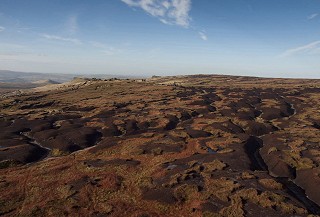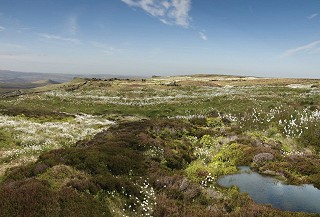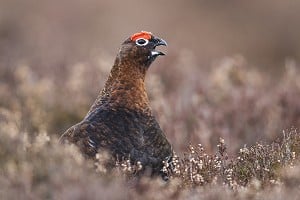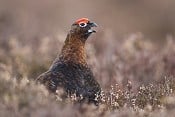
A long term habitat restoration project was launched in the Peak District last Friday. If successful, the National Trust’s “biggest and most ambitious” landscape-scale nature conservation initiative to date will change the face of Kinder Scout.
The 50-year vision is to restore 10,000 hectares (40 sq miles) of healthy peat bogs, diverse heaths and natural woodland on Kinder Scout and in the Upper Derwent Valley. This diverse area includes rocky tors, gritstone edges, dramatic valleys and cloughs and mile upon mile of moorland bog and heath.
Jon Stewart, National Trust General Manager for the Peak District, said:
'This dramatic, beautiful and fragile landscape is the ideal place for the biggest and most ambitious work that the Trust has ever undertaken to develop a clear road map for one of its upland estates.'
'Whilst there is much to celebrate about the moors and their valley-sides there are massive management challenges such as eroding peat, drying out bog, lost woodland, suppressed heathland vegetation and maintaining good access. We want to work with those who care for and have a stake in their future to address these challenges.'
The Trust's conservation work will aim to restore habitats such as bogs and heaths on the moor tops and heathland and woodlands in steep valleys.


This mocked-up before-and-after shot shows how today's bare peat will - hopefully - become vegetated again with mosses, grasses and dwarf shrubs. Such wet blanket bog will soak up water like a sponge, reducing the risk of damaging flash floods and locking up carbon as new peat forms.
Peat-rich blanket bogs are of national and international significance, and it’s vital that this fragile habitat is maintained, say the Trust, because severe erosion can release carbon into the atmosphere and have a knock-on effect on the quality of drinking water from peat ending up in reservoirs.
As the Trust points out, the peat in the uplands of the UK stores as much carbon as the forests of Britain and France combined, so a priority for the vision will be to keep the bogs wet, for example by blocking gullies that have eroded the landscape, and making sure that there is plenty of vegetation cover. Work has already started on this up on the plateau of Kinder Scout.
Work will also begin to increase the spread of trees and shrubs – both naturally and through planting – in the valleys, to help restore lost wildlife habitat. Tree cover will also improve water quality and help conserve soils.
By creating the right conditions it will be possible for valued species such as birds of prey, red grouse and mountain hare to call the High Peak moors home in the decades to come, say the National Trust. One longer term measure of the success of the vision would be creating the right conditions for the black grouse to return to the moors; an upland bird that disappeared from the Peak District in the 1990s.
Jon Stewart added:
'We have learnt a huge amount about how managing these moors to boost their wildlife and restore the landscape can also have massive benefits for our drinking water quality, flood management, carbon storage and people’s enjoyment, health and well-being.'
'They are in effect a life support system. Managing the moors in tune with these benefits we believe provides the best way forward for those making their living from the moors as well.'
'So this vision is all about working with people to care for the land whether our farm tenants, partners or the many people that passionately love the Peak District to restore the landscape and habitats, provide fantastic access to a wild place, deliver better water quality and care for the carbon in these upland soils.'












Comments